Items filtered by date: January 2024
Treat Your Feet to a Medical Pedicure
Treat Your Feet to a Medical Pedicure
Pain Management for Cracked Heels
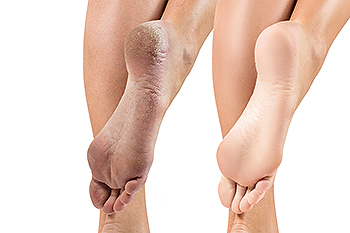
Effective pain management for cracked heels, or heel fissures, is essential to alleviate discomfort and promote healing. Cracked heels often occur due to dry skin, lack of moisture, or underlying medical conditions. To address the pain associated with this condition, several strategies can be employed. Moisturization is key. Exfoliation can also help, but excessive scrubbing can worsen the condition. Foot soaks in warm water can soften the skin and provide relief. Well-fitting footwear with adequate cushioning plays a role in pain management as well. Avoid open-back shoes or sandals that may exacerbate the issue. Heel cups or orthotic insoles may help reduce pressure on the cracked areas and provide additional support. If you have persistent cracked heels or they appear infected, it is suggested that you schedule an appointment with a podiatrist who can provide relief and additional treatment options.
If the skin on your feet starts to crack, you may want to see a podiatrist to find treatment. If you have any concerns, contact one of our providers from Gentle Touch Foot Medspa. Our staff members can provide the care you need to keep you pain-free and on your feet.
Cracked Heels
It is important to moisturize your cracked heels in order to prevent pain, bleeding, and infection. The reason cracked heels form is because the skin on the foot is too dry to support the immense pressure placed on them. When the foot expands, the dry skin on the foot begins to split.
Ways to Help Heal Them
- Invest in a good foot cream
- Try Using Petroleum Jelly
- Ease up on Soaps
- Drink Plenty of Water
Ways to Prevent Cracked Heels
- Moisturize After Showering
- Skip a Shower
- Keep Shower Water Lukewarm
- Don’t Scrub Your Feet
If you are unsure how to proceed in treating cracked heels, seek guidance from a podiatrist. Your doctor will help you with any questions or information you may need.
If you have any questions, please feel free to contact our office located in Arlington, TX . We offer the newest diagnostic and treatment technologies for all your foot care needs.
Reasons Why Only One Foot Can Become Swollen
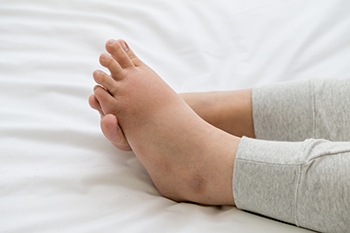
Experiencing swelling in one foot can be a perplexing and discomforting issue with various underlying causes. Trauma, such as a sprain or injury, often leads to localized swelling, restricting fluid flow in the affected area. Deep vein thrombosis, a blood clot in the leg, may cause one foot to swell due to compromised circulation. Inflammatory conditions like arthritis can contribute to unilateral swelling, affecting the joints and soft tissues. Lymphatic issues, such as lymphedema, result in fluid retention and swelling, predominantly on one side. Foot infections, including cellulitis, can lead to localized swelling as the body responds to the infectious agents. Vascular problems, like peripheral artery disease, may cause poor blood flow to one foot, resulting in swelling. Understanding the reasons is critical for seeking timely medical attention, as addressing the underlying cause is essential in managing and alleviating the swelling in a singular foot. If you have one foot that is swollen, it is strongly suggested that you consult a podiatrist who can determine the cause and offer effective relief and treatment options.
Swollen feet can be a sign of an underlying condition. If you have any concerns, contact one of our providers of Gentle Touch Foot Medspa. Our staff members can provide the care you need to keep you pain-free and on your feet.
Swollen feet are a common ailment among pregnant women and people who stand or sit for extended periods. Aging may increase the possibility of swollen feet and patients who are obese often notice when their feet are swelling too. There may be medical reasons why swollen feet occur:
- Phlebitis - A condition that causes the veins to become inflamed and can also cause leg pain.
- Liver disease - This may lead to low blood levels of albumin which is a protein. This can cause fluid in the blood to pass into the tissues and several areas of the body can become swollen.
- Heart failure - When the heart doesn’t pump properly the blood that is normally pumped back to the heart can pool in the veins of the legs causing swollen feet.
- Kidney disease - One of the main functions of the kidneys is releasing excess fluid in the body. This type of condition can make it difficult for the kidneys to function properly, and as a result the feet may become swollen.
- Deep-vein thrombosis (DVT)- This is a serious condition where blood clots form in the veins of the legs. They can block the return of blood from the legs to the heart which may cause the feet to swell. It is important to be treated by a podiatrist if this condition is present.
Swollen feet can also be caused by bone and tendon conditions, including fractures, arthritis, and tendinitis. Additionally, there may be skin and toenail conditions and an infection may cause the feet to swell. Patients who take medicine to treat high blood pressure may be prone to getting swollen feet.
Many patients elevate their feet to help relieve the swelling and this is generally a temporary remedy. When a podiatrist is consulted the reason behind the swelling can be uncovered and subsequently treated.
If you have any questions please feel free to contact our office located in Arlington, TX . We offer the newest diagnostic tools and technology to treat your foot and ankle needs.
Reasons Why Only One Foot Can Become Swollen

Experiencing swelling in one foot can be a perplexing and discomforting issue with various underlying causes. Trauma, such as a sprain or injury, often leads to localized swelling, restricting fluid flow in the affected area. Deep vein thrombosis, a blood clot in the leg, may cause one foot to swell due to compromised circulation. Inflammatory conditions like arthritis can contribute to unilateral swelling, affecting the joints and soft tissues. Lymphatic issues, such as lymphedema, result in fluid retention and swelling, predominantly on one side. Foot infections, including cellulitis, can lead to localized swelling as the body responds to the infectious agents. Vascular problems, like peripheral artery disease, may cause poor blood flow to one foot, resulting in swelling. Understanding the reasons is critical for seeking timely medical attention, as addressing the underlying cause is essential in managing and alleviating the swelling in a singular foot. If you have one foot that is swollen, it is strongly suggested that you consult a podiatrist who can determine the cause and offer effective relief and treatment options.
Swollen feet can be a sign of an underlying condition. If you have any concerns, contact one of our providers of Gentle Touch Foot Medspa. Our staff members can provide the care you need to keep you pain-free and on your feet.
Swollen feet are a common ailment among pregnant women and people who stand or sit for extended periods. Aging may increase the possibility of swollen feet and patients who are obese often notice when their feet are swelling too. There may be medical reasons why swollen feet occur:
- Phlebitis - A condition that causes the veins to become inflamed and can also cause leg pain.
- Liver disease - This may lead to low blood levels of albumin which is a protein. This can cause fluid in the blood to pass into the tissues and several areas of the body can become swollen.
- Heart failure - When the heart doesn’t pump properly the blood that is normally pumped back to the heart can pool in the veins of the legs causing swollen feet.
- Kidney disease - One of the main functions of the kidneys is releasing excess fluid in the body. This type of condition can make it difficult for the kidneys to function properly, and as a result the feet may become swollen.
- Deep-vein thrombosis (DVT)- This is a serious condition where blood clots form in the veins of the legs. They can block the return of blood from the legs to the heart which may cause the feet to swell. It is important to be treated by a podiatrist if this condition is present.
Swollen feet can also be caused by bone and tendon conditions, including fractures, arthritis, and tendinitis. Additionally, there may be skin and toenail conditions and an infection may cause the feet to swell. Patients who take medicine to treat high blood pressure may be prone to getting swollen feet.
Many patients elevate their feet to help relieve the swelling and this is generally a temporary remedy. When a podiatrist is consulted the reason behind the swelling can be uncovered and subsequently treated.
If you have any questions please feel free to contact our office located in Arlington, TX . We offer the newest diagnostic tools and technology to treat your foot and ankle needs.
Essential Foot Stretches for Runners
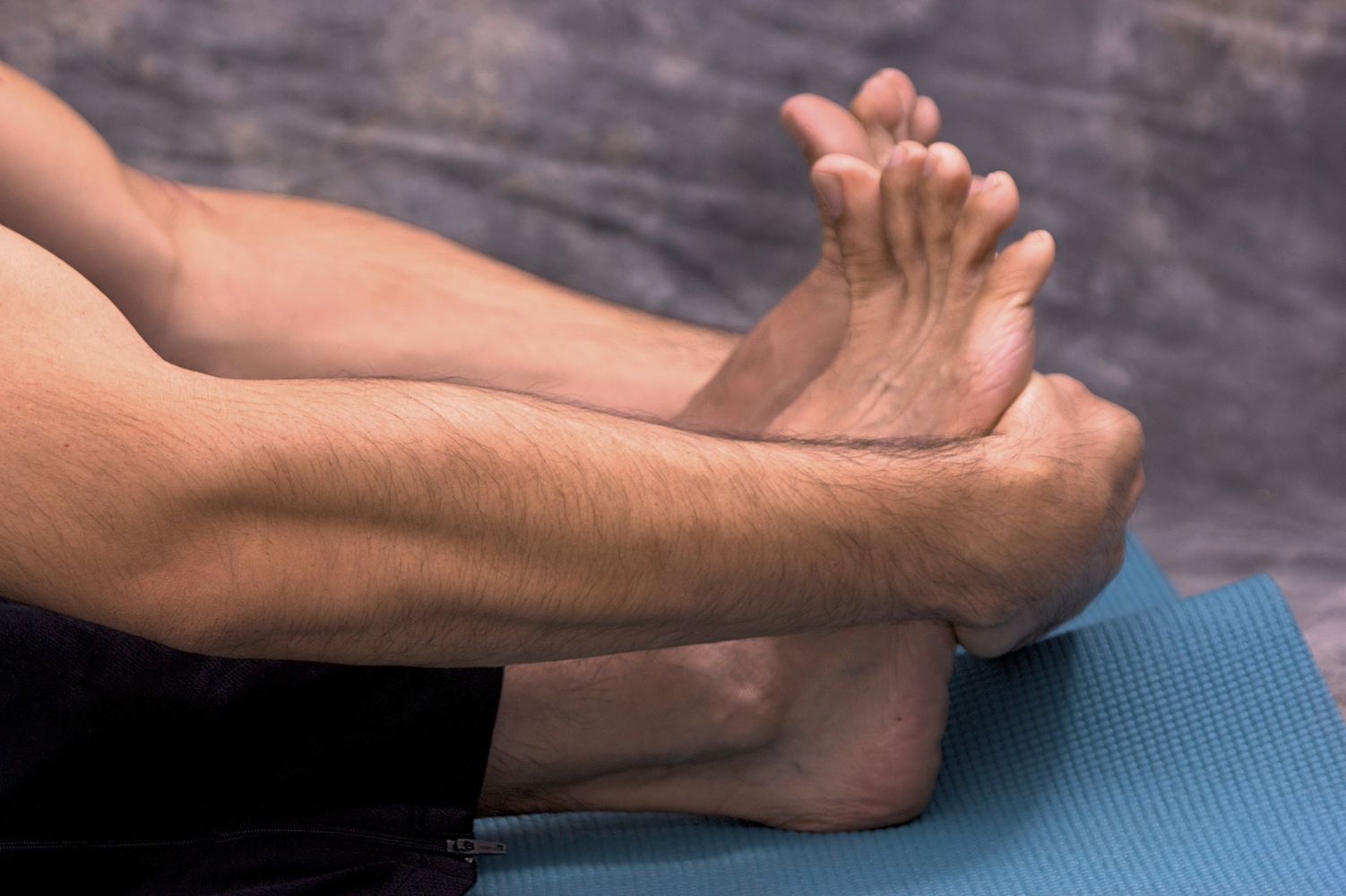
For runners, maintaining optimal foot flexibility is essential to enhance performance and prevent injuries. Incorporating a routine of targeted foot stretches into your pre- and post-run regimen can significantly contribute to overall foot health. Begin with a seated stretch, gently flexing and pointing your toes to improve ankle mobility. The toe stretch, achieved by sitting on your heels with toes tucked underneath, aids in relieving tension in the feet. Rolling a tennis ball beneath your foot applies pressure to release tightness in the arch, while the calf stretch is effective in preventing strains. Additionally, the plantar fascia stretch, involving a seated leg cross, helps alleviate tension in the soles. Prioritize these stretches not only to optimize your running experience but also to safeguard against potential foot-related discomfort and injuries in the long run. If you are seeking additional information about foot stretches or experience foot pain from running, it is suggested that you speak to a podiatrist.
Stretching the feet is a great way to prevent injuries. If you have any concerns with your feet consult with one of our providers from Gentle Touch Foot Medspa. Our staff members will assess your condition and provide you with quality foot and ankle treatment.
Stretching the Feet
Being the backbone of the body, the feet carry your entire weight and can easily become overexerted, causing cramps and pain. As with any body part, stretching your feet can serve many benefits. From increasing flexibility to even providing some pain relief, be sure to give your feet a stretch from time to time. This is especially important for athletes or anyone performing aerobic exercises, but anyone experiencing foot pain or is on their feet constantly should also engage in this practice.
Great ways to stretch your feet:
- Crossing one leg over the others and carefully pull your toes back. Do 10-20 repetitions and repeat the process for each foot
- Face a wall with your arms out and hands flat against the wall. Step back with one foot and keep it flat on the floor while moving the other leg forward. Lean towards the wall until you feel a stretch. Hold for 30 seconds and perform 10 repetitions for each foot
- Be sure not to overextend or push your limbs too hard or you could risk pulling or straining your muscle
Individuals who tend to their feet by regular stretching every day should be able to minimize foot pain and prevent new problems from arising.
If you have any questions, please feel free to contact our office located in Arlington, TX . We offer the newest diagnostic and treatment technologies for all your foot care needs.
Causes of Corns and How to Ease the Pressure
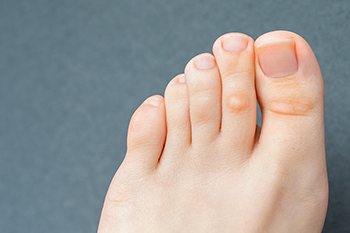
Corns, those small, localized areas of thickened skin on the feet, often develop as a result of repeated friction and pressure. Wearing ill-fitting shoes or high heels are common culprits, subjecting specific areas of the feet to constant rubbing and stress. The body's natural response is to protect itself by forming corns, which can be painful and uncomfortable. To reduce pressure and alleviate the discomfort associated with corns, individuals should prioritize wearing well-fitted, comfortable shoes with adequate padding and support. Additionally, regularly moisturizing the feet helps to soften the skin, reducing friction and the likelihood of corn formation. It is essential to avoid using over-the-counter corn removal products, as they can be harsh and may worsen the condition. Instead, seeking advice from a podiatrist ensures a tailored approach to managing corns, addressing their root causes, and providing relief from the persistent pressure that contributes to their formation. If you have developed a corn, it is suggested that you contact this type of doctor who can offer you correct treatment solutions.
Corns can make walking very painful and should be treated immediately. If you have questions regarding your feet and ankles, contact one of our providers of Gentle Touch Foot Medspa. Our staff members will treat your foot and ankle needs.
Corns: What Are They? And How Do You Get Rid of Them?
Corns are thickened areas on the skin that can become painful. They are caused by excessive pressure and friction on the skin. Corns press into the deeper layers of the skin and are usually round in shape.
Ways to Prevent Corns
There are many ways to get rid of painful corns such as:
- Wearing properly fitting shoes that have been measured by a professional
- Wearing shoes that are not sharply pointed or have high heels
- Wearing only shoes that offer support
Treating Corns
Although most corns slowly disappear when the friction or pressure stops, this isn’t always the case. Consult with your podiatrist to determine the best treatment option for your case of corns.
If you have any questions please feel free to contact our office located in Arlington, TX . We offer the newest diagnostic and treatment technologies for all your foot and ankle needs.
Causes and Symptoms of Toenail Fungus
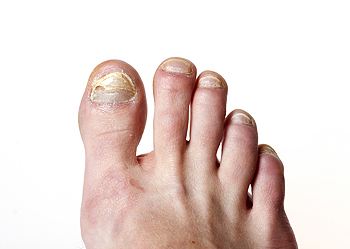
Toenail fungus, medically known as onychomycosis, is a common nail infection that can be both unsightly and uncomfortable. It typically occurs when fungal organisms, like dermatophytes, infiltrate the nail bed through small cuts or separations in the nail or surrounding skin. The symptoms of toenail fungus are recognizable. Infected nails often become discolored, appearing yellow, brown, or white, and they may thicken and become brittle. As the fungus progresses, the nails can become crumbly and ragged. In some cases, they may emit a foul odor. Other potential signs of toenail fungus include pain or discomfort, especially while wearing shoes. The infection can also spread to other nails or the surrounding skin, leading to additional fungal growth and irritation. If you have noticed the beginning signs of toenail fungus, it is strongly suggested that you schedule an appointment with a podiatrist who can promptly begin the appropriate treatment.
For more information about treatment, contact one of our providers of Gentle Touch Foot Medspa. Our staff members can provide the care you need to keep you pain-free and on your feet.
Toenail Fungus Treatment
Toenail fungus is a condition that affects many people and can be especially hard to get rid of. Fortunately, there are several methods to go about treating and avoiding it.
Antifungals & Deterrence
Oral antifungal medicine has been shown to be effective in many cases. It is important to consult with a podiatrist to determine the proper regiment for you, or potentially explore other options.
Applying foot powder on the feet and shoes helps keep the feet free of moisture and sweat.
Sandals or open toed shoes – Wearing these will allow air movement and help keep feet dry. They also expose your feet to light, which fungus cannot tolerate. Socks with moisture wicking material also help as well.
If you have any questions please feel free to contact our office located in Arlington, TX . We offer the newest diagnostic tools and technology to treat your foot and ankle needs.


